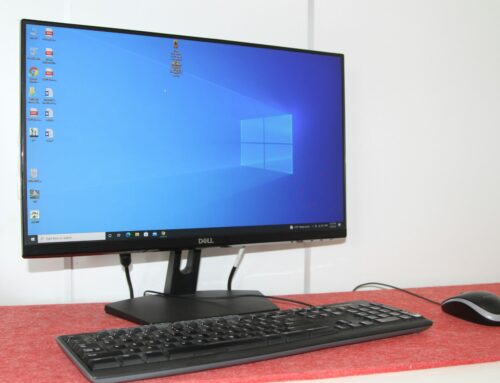Your Mac is an essential tool for both work and leisure activities. Its failure can drastically affect your productivity and overall experience. Recognising the warning signs early can prevent minor issues from becoming major setbacks. In this article, we’ll explore these signs in detail, helping you understand when it’s time to seek professional help for your Mac.
Unusual Noises and Overheating
Unusual noises are often the first sign that something is not quite right with your Mac. If you hear persistent whirring, grinding, or clicking sounds, it could indicate a problem with your hard drive or cooling fan. These noises are usually a cry for help from your device, signalling that it is struggling to operate correctly. A malfunctioning cooling fan, for example, may not be able to properly cool your Mac, leading to excessive heat build-up.
Overheating is another serious issue that shouldn’t be ignored. When a Mac overheats, it can cause long-term damage to internal components. This might manifest as the bottom of the laptop feeling unusually hot to the touch or the internal fans running at maximum speed trying to cool down the system. Overheating can make your Mac sluggish and can severely affect its performance.
To address these issues, start by ensuring your Mac is in a well-ventilated area and not resting on soft surfaces that could block airflow. Regularly cleaning the vents and fans can also help maintain proper temperature levels. However, if the noises persist or the overheating continues, it’s wise to seek professional repair services to avoid long-term damage.
Frequent Crashes and Software Errors
Frequent crashes and software errors are significant indicators that your Mac may need professional attention. Symptoms can include your Mac unexpectedly shutting down, freezing during use, or displaying error messages frequently. These issues can disrupt your workflow and suggest underlying problems with your hardware or software.
One common cause of crashes is corrupted system files or software. If your applications frequently crash or fail to open, it could mean they are not communicating correctly with your system. In some cases, reinstalling the offending software can resolve the issue. Be sure to back up your data before attempting any fixes.
Another cause could be faulty hardware such as failing RAM or a deteriorating hard drive. You might notice your Mac becoming progressively slower or struggling with tasks that it used to handle effortlessly. Running diagnostic tools can help identify if there are hardware issues, but interpreting the results often requires professional expertise.
It’s important to address frequent crashes and software errors promptly. Ignoring these warning signs can lead to data loss or more severe hardware failures. If basic troubleshooting doesn’t resolve the issues, consult a professional to diagnose and fix the underlying cause effectively.
Display Problems and Screen Damage
Display problems can significantly hamper your Mac’s usability. Symptoms like flickering screens, dead pixels, and screen artefacts can be distracting and may point to deeper issues. For instance, flickering can be caused by problems with the display cable or the graphics card. Dead pixels, on the other hand, might indicate a defect in the screen itself.
Physical damage to the screen, such as cracks or black spots, is a more obvious sign that professional repair is needed. Even minor cracks can spread over time, making your Mac unusable. A damaged screen might not respond well to touch if you’re using a MacBook with a touchscreen, adding another layer of inconvenience.
To diagnose display issues, start by testing different display resolutions and refreshing rates. Sometimes, adjusting these settings can temporarily fix flickering problems. Disconnect any external monitors to determine if the issue is isolated to the laptop screen. If hardware damage is suspected, though, these solutions are only temporary. At this stage, seeking professional repair is often the best course of action to prevent further damage and ensure a proper fix.
Decreased Performance and Sluggishness
A noticeable decrease in performance can be frustrating and is often a sign that your Mac needs professional repair. Sluggish performance can manifest as slow boot times, lagging applications, and delayed responses. These problems can be particularly disruptive if you rely on your Mac for work or creative projects.
One common cause of decreased performance is insufficient memory or a hard drive nearing its storage limit. Regularly clearing out unnecessary files and utilising cloud storage can help, but this might not be a long-term solution. Running disk utility applications to check the health of your storage drive can also shed light on any potential issues.
Another potential cause is malware or too many background applications consuming system resources. You can check for this by monitoring your Mac’s Activity Monitor. Disabling non-essential startup items can improve performance, but persistent sluggishness often indicates an underlying problem that requires professional attention. This might include hardware upgrades or a complete system clean-up to restore your Mac to optimal performance.
Conclusion
Identifying the signs that your Mac needs professional repair is crucial for maintaining its longevity and efficiency. Unusual noises, overheating, frequent crashes, software errors, display problems and decreased performance all point to potential issues that might require expert intervention. Addressing these concerns promptly can prevent minor issues from escalating into major, costly repairs.
If you’re experiencing any of these problems with your Mac, don’t hesitate to seek our professional help for Mac repairs in London. At Forest City Computer Repairs, our team of experts is ready to diagnose and fix your issues efficiently. Contact us today to get your Mac back in top condition!







